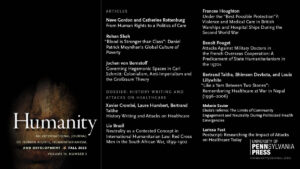In the mid-1970s, the United Nations hosted a dramatic attempt to totally transform the world economy, which appeared to be on the cusp of victory at the Sixth Special Session of the General Assembly in April and May 1974. In a moment that represented the highest tide of southern self-confidence, the Group of 77 (G-77), unleavened by the language of compromise, demanded global redistribution as a matter of right. The manifestos of this revolt of sovereigns were the Declaration on the Establishment of a New International Economic Order (NIEO), adopted in May 1974, and its sister document, the Charter on the Economic Rights and Duties of States (CERDS), passed in December 1974.1 Although both texts held an ideological lineage dating back to the 1950s, the NIEO flowered in a period of disruption and found purchase in a moment when Western intellectual and political currents ran to the abstractly global and planetary.2 It repositioned an older generation of Third World claims within the new vocabulary of the interdependent and pluripolar world system, submerging the older terms of economic sovereignty under the new slogans of justice and solidarity. The NIEO’s brief ascendancy unfolded in the same habitat of pretended international moralism that hosted the “breakthrough” of human rights activism.
This essay addresses the interaction between the NIEO’s claims and the language and philosophy of human rights, with a focus on the year 1975. Coincident almost precisely with the “breakthrough” phase of global human rights mobilization, the NIEO presented a competitor vision of universal justice. As did advocates of the nascent transnational human rights movement, proponents of the NIEO advanced a utopian program, explicitly global in ambition. Yet the NIEO’s central object was an augmentation of the southern state, deploying the internationalist language of rights and solidarity to enhance the status not of the citizen but of the sovereign. The NIEO involved an emphatic deployment of terms and categories from the human rights milieu: equality, solidarity, and improved material conditions. These sat under an insistently globalist rhetorical carapace, placing the NIEO program proximate to the conceptual territory of human rights. This pidgin globalism facilitated a level of cooption and confusion of human rights terminology quite unlike the bald instrumentalist quests of antiracism and anticolonialism that had preceded it in the 1960s. Often, NIEO language was human rights language, merely with different chirality: its primary axis aligned to state and peoples. Fractionation of these two lexical isomers required serious introspection among movements that had taken a cluster of terms around development, freedom, equality, solidarity, and justice for granted. Foremost among those engaged in this haphazard process of differentiation was second-wave feminism, which was among the first to encounter the NIEO in full force in 1974 and 1975.
